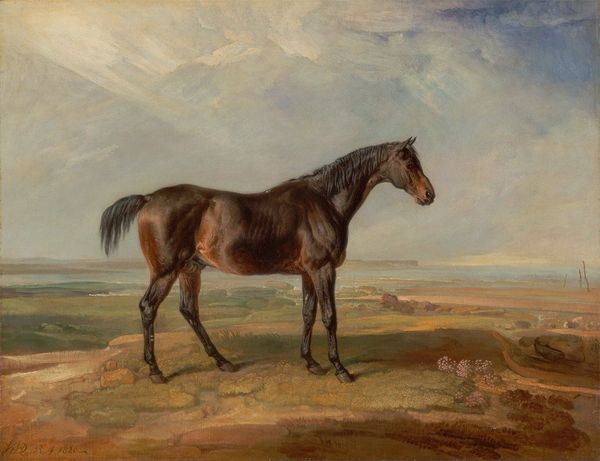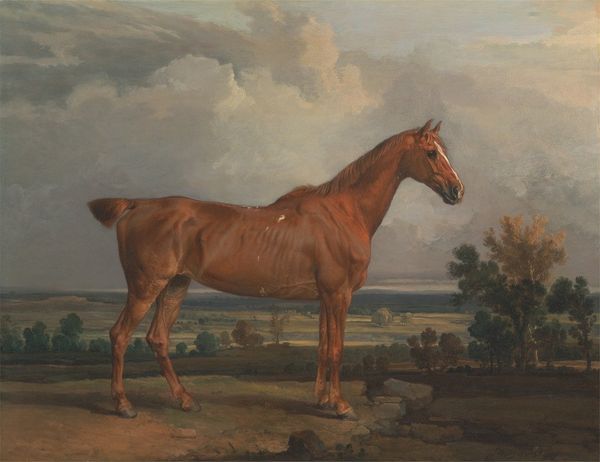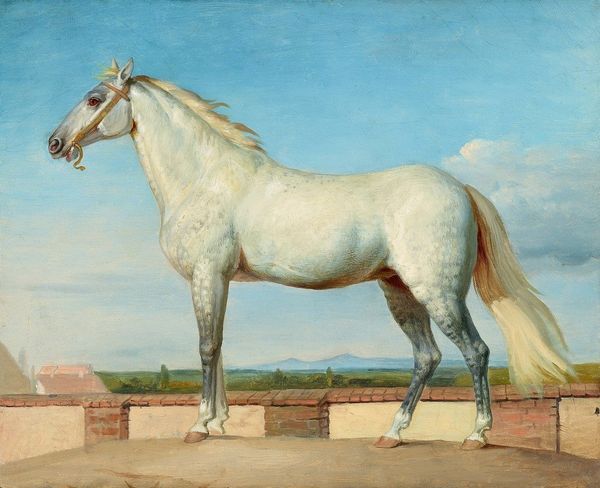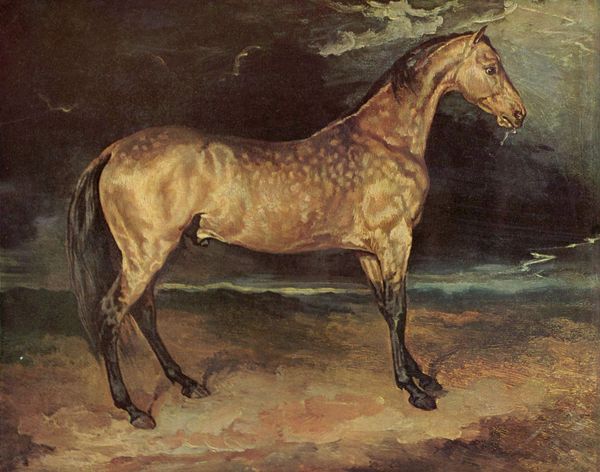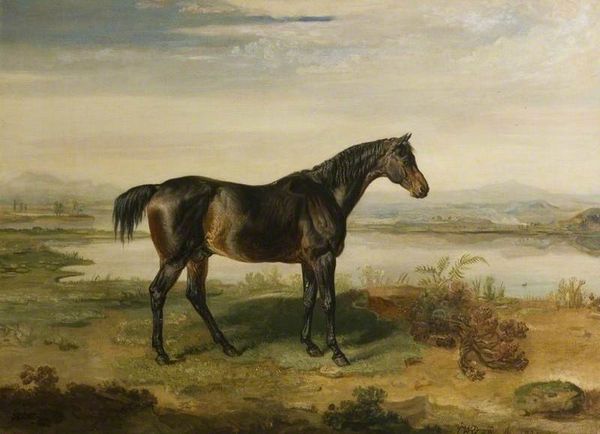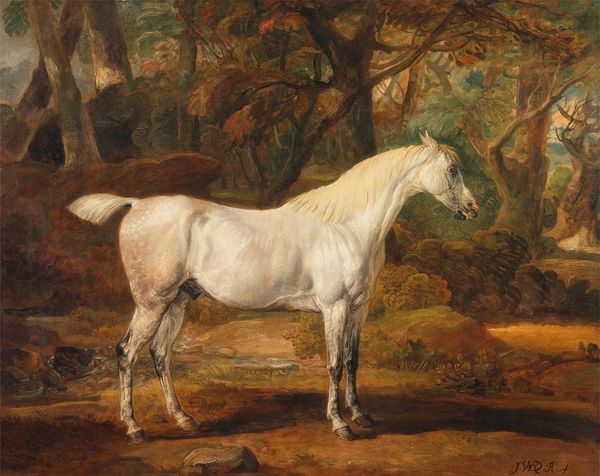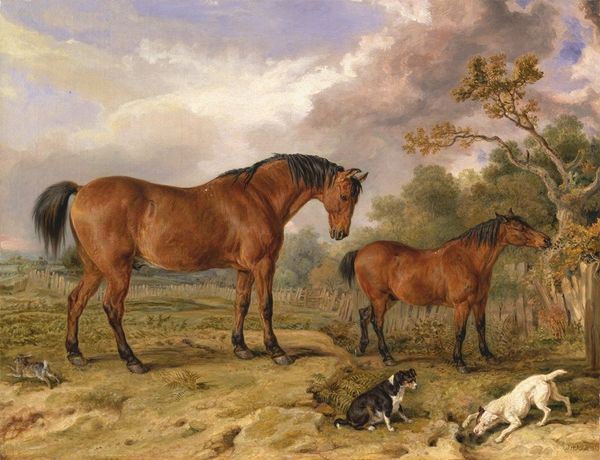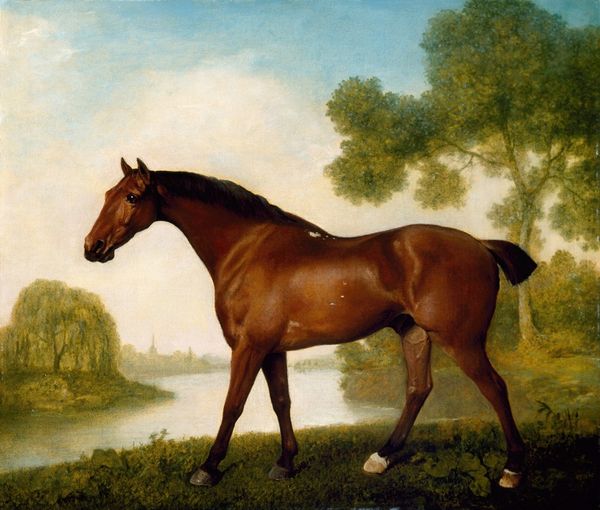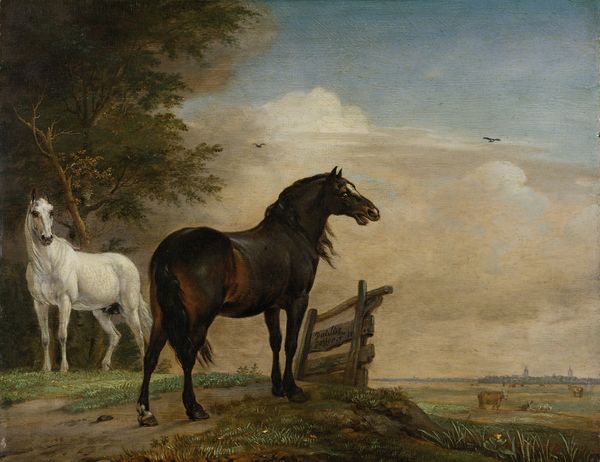
oil-paint
#
portrait
#
animal
#
oil-paint
#
landscape
#
oil painting
#
romanticism
Copyright: Public Domain: Artvee
Editor: So, this is James Ward’s “The Marquess of Londonderry’s Arabian Stallion in a Landscape,” painted in 1831 using oil paints. The sheer size is arresting, but I’m struck by how the horse almost seems separate from the background; it's static against the dynamic landscape. What do you see in this piece, approaching it purely from its formal elements? Curator: Indeed. Let's consider the interplay between line, color, and texture. Observe the tension Ward creates between the crisp, almost hyper-realistic depiction of the stallion, achieved through meticulous brushwork and highlighting, and the much looser, more gestural rendering of the landscape. Note how the chromatic scale subtly reinforces the subject. Editor: That’s a good point. I see now the restrained palette for the horse, using mostly browns, while the landscape integrates greens and blues with a stronger sense of depth. What is the purpose? Curator: Precisely. Consider also the compositional structure. The horse dominates the foreground, presented in profile and rigidly framed against a low horizon line. Now consider the perspective. How does Ward use perspective to influence the reading of space and volume? Editor: I can see that the landscape sort of fades off behind him. Maybe to reinforce the magnificence of the horse as its own contained form? Curator: A possible interpretation. It highlights how Ward emphasizes surface detail and pictorial flatness, thus prompting reflection upon its own construction, its status as a painting, as object. Does this approach suggest a direction? Editor: This exercise is prompting a new understanding of Ward's painting. It's not just a portrait, but a statement about form itself. Thanks! Curator: Indeed. Reflecting on the visual components reveals artistic intentions. Thank you.
Comments
No comments
Be the first to comment and join the conversation on the ultimate creative platform.


